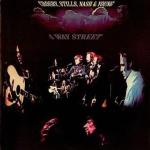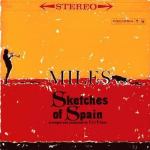 Hot Stamper Pressings of Sonny Rollins’s Albums Available Now
Hot Stamper Pressings of Sonny Rollins’s Albums Available Now
Hot Stamper Pressings of Crosby, Stills, Nash and Young’s Albums Available Now
One of our good customers had this to say about some Hot Stampers he purchased recently:
Dear Tom and Fred
After having had the opportunity to listen to the next batch of 7 more records, here are my observations on the now 40 records I bought from you.

First to my listening experience. After receiving the CSNY 4 Way Street and looking for my own record, I thought was a German press easy to beat I realized it was a white label promo first press and thought, oh, did I make a mistake to buy this for this kind of money from you guys, this may be a tough one to crack?
Not so, your SH Stamper clearly beat the WL promo, check!
Next up was the Miles Davis Sketches of Spain White Hot Stamper, one of my very top Miles favorites.

I did not recall that I had the six eye first press, and on side 2, with identical stampers (when your 3/3 WH show up, you do not have the time to check this but hurry :-since your WH 3/3s sell like hot cakes!).
So even more difficult to beat?? Promising start: your WH was clearly better on side 1, now to the identical stampers side 2: not as clearly but still just more transparent, better drums, less shrill on track 2, check!
But it certainly cannot get better than this 3/3 WH stamper, can it?
Next up is Sonny Rollins 3/3 WH Stamper [of Way Out West]. Hard to believe, but yes, even better than the great Miles 3/3 WHS, and I will spare you the time to comment on my 1992 Analogue Productions Reissue which I always thought was quite decent.
And so it goes on…
Christian
Christian,
In less than a year you have acquired a large number of simply amazing sounding records. Congratulations.
As you point out about the stampers, you may have a pressing with the right stampers, but our copy will still beat it. How it was pressed and how it was cleaned are critical to the sound, and that is not something the stamper numbers can tell you. It’s a subject we discuss all over this blog. Here is a good place to start.
As for your 1992 Analogue Productions Heavy Vinyl remaster, I honestly don’t know how anyone can listen to a record with sound like that and consider it acceptable, or, in your words, “quite decent.” I went into the long story of the album in this commentary:
Here’s an excerpt:
We don’t pay any attention to who makes the records, how or why. We just play them and report our findings. No doubt most audiophiles and the reviewers who write for them think that making records the “right” way should result in better sound, but we have found precious little evidence to back up that theory, and volumes of evidence to refute it.
Yes, those Analogue Productions records sucked, they continue to suck, and they will always suck. The “audiophile” records of that day did lack presence, and the passage of time is not going to change that fact. Play practically any Reference, Chesky or Classic title from 1995 to the present and listen for the veiled midrange, the opacity, the smeary transients, and the generally constricted, compressed, lifeless quality of its sound, a sound that has been boring us to tears for close to two decades (and fundamentally undermining the very rationale for the expense and hassle of analog itself in the modern digital age, a much more serious charge).
Some things have changed since I wrote that screed many years ago. For example, we don’t find the sound of the OJC pressing of the album acceptable these days, a subject I plan to address before too long.
But mostly what we heard in 1992 is what the record probably still sounds like today. How would I know that, not having played a copy of it in decades?
Well, I would simply point you in the direction of other Analogue Productions records with similar shortcomings. I site four in the list below, but I could easily link to a great many others.
Judging by these four, overly rich and overly smooth, the same ludicrously out of whack tonal balance as the AP Way Out West, appears to be something like the Analogue Productions house sound. They actually like their records to have these “qualities.”
Click on any of the four to understand just how damaging their incompetent remastering was to these classic albums.
The bottom line is this: The Hot Stamper pressing of Way Out West you have now in your possession is the one that allows you to hear what that album is supposed to sound like.
Not the way Chad Kassem likes his records to sound: opaque, bloated, dull, smeary and compressed.
No, your White Hot Stamper has the brilliant sound that Roy DuNann recorded all those years ago, sounding, I believe, the way he wanted it to.
 Contra Kassem, it didn’t need fixing. It didn’t need changing.
Contra Kassem, it didn’t need fixing. It didn’t need changing.
All that was needed was for some group to come along who could properly clean a batch of vintage pressings, original and otherwise, play them, figure out what the best copies do that the average copy doesn’t, identify that best copy, and send it your way.
There was nobody who could do that kind of work in 1992, not even us. It would be another 12 years before we managed to do our first official shootout, using a very different stereo and very different cleaning technologies, both immeasurably better than what we had to work with in the ’90s.
Christian, if you have any AP records, or Heavy Vinyl from any other manufacturers, pull them off the shelf and play them. They won’t sound anything like the Hot Stamper pressings of 4 Way Street, Sketches of Spain and Way Out West we sent you. I’m guessing they won’t sound “quite decent” either.
Now that you know just how good the right vintage pressings can sound, those modern imposters are simply no longer going to be able to trick you. They were always a fraud and a scam — a passable-at-best product to be offered at what appeared to be an attractive price — now hopelessly outclassed in every way by the real thing, the real thing being a properly pressed, properly cleaned old record.
Welcome to the world of amazing sounding vinyl. We look forward to finding you the best sounding pressings of many of your favorite recordings for years to come.
Thanks for your letter.
Best, TP
PS
You may want to check out Robert Brook’s fairly extensive review for Way Out West, which can be found here.
Further Reading
(more…)




 Contra Kassem, it didn’t need fixing. It didn’t need changing.
Contra Kassem, it didn’t need fixing. It didn’t need changing.
 Reviews and Commentaries for Somethin’ Else
Reviews and Commentaries for Somethin’ Else





